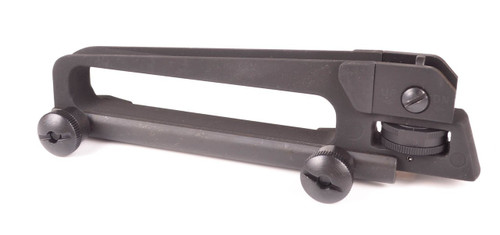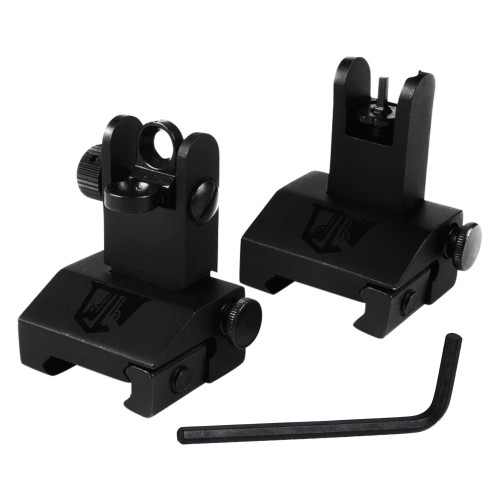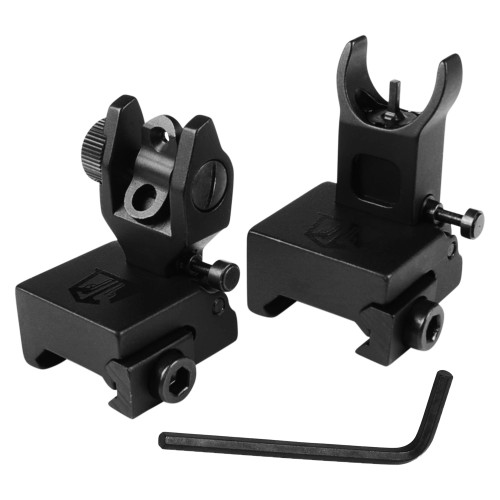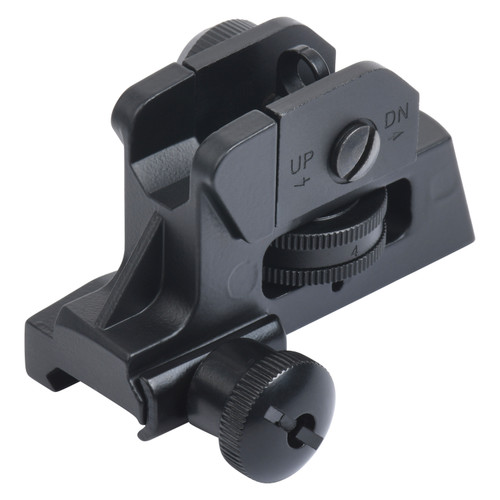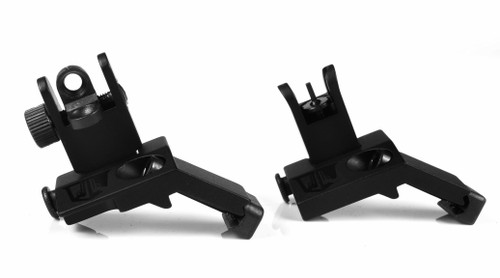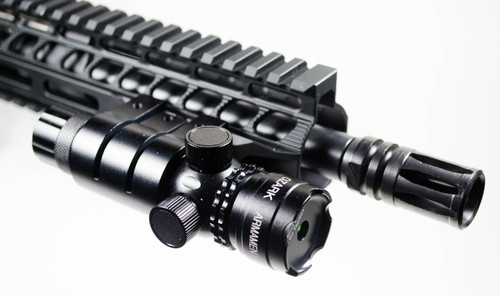Posted by Matt Rice on Jan 20th 2024
AR-15 Essentials: A Beginner's Safety & Accuracy Guide
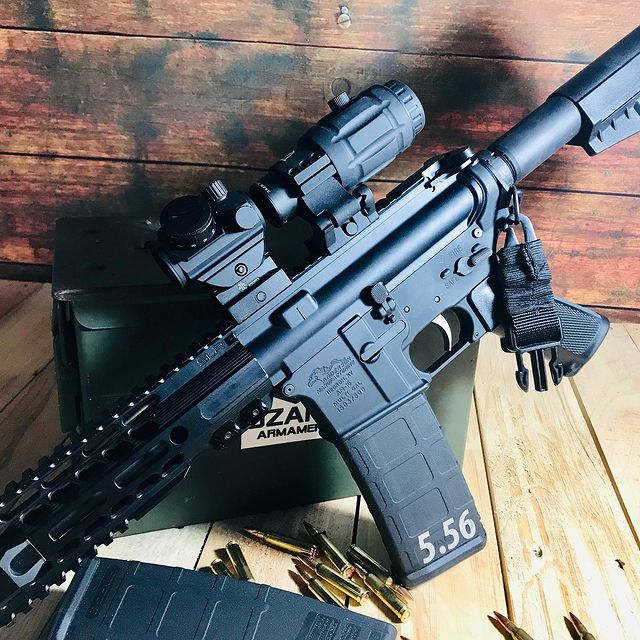
Embarking on the journey of mastering the AR-15 can be thrilling, yet daunting for beginners. We're here to break it down, making the essentials of operating this popular rifle accessible and straightforward. Within minutes, you'll have the confidence to handle your AR-15 with ease.
Understanding your AR-15's parts and their functions is key. We'll guide you through the basics, from the safety and mag release to a smooth trigger press. Plus, we'll cover the fundamentals of stance and grip, ensuring you're well-equipped to use your AR-15 safely and effectively.
Safety First: Understanding the AR-15's Safety Features
Operating an AR-15 rifle safely is paramount for beginners and seasoned shooters alike. The AR-15 is designed with several safety features to help prevent accidental discharge and to ensure safe handling.
The Safety Selector is the most critical component regarding the AR-15’s safety mechanisms. Located on the left side of the receiver—though it can be ambidextrous for those who prefer a setup that allows operation from both sides—this switch rotates between "Safe" and "Fire." It's crucial to keep the rifle on "Safe" until you're absolutely ready to fire.
When the safety is engaged, it prevents the trigger from moving and the rifle from firing. It's essential to check the safety selector before handling the rifle and especially before passing it to someone else.
Magazine Release is another feature you'll need to understand. This button, when pressed, will eject the magazine from the rifle, allowing you to remove ammunition from the firearm as an additional safety measure or to reload a fresh magazine. It's important to practice magazine changes to become efficient and safe.
In addition to the built-in safety features of your AR-15, there are several best practices you should always follow:
- Always keep the muzzle pointed in a safe direction, even when the safety is engaged.
- Be aware of your target and beyond; bullets can penetrate through targets and walls.
- Keep your finger off the trigger until you are sighted on your target and ready to shoot.
We'd also recommend practicing with snap caps or dummy rounds to simulate loading and firing. This way, you can get a feel for the rifle's operation without the risk of live fire. Regular practice handling your weapon—understanding its safety features, loading techniques, and response drills—will ingrain safe habits and improve your confidence.
Knowing your rifle starts with respecting its power and prioritizing safety. Treat every firearm as if it's loaded and never take safety for granted. Remember, skills come with practice and familiarity with your AR-15's safety features is the foundation of responsible gun ownership.
Getting a Grip: Mastering the Proper Stance and Grip

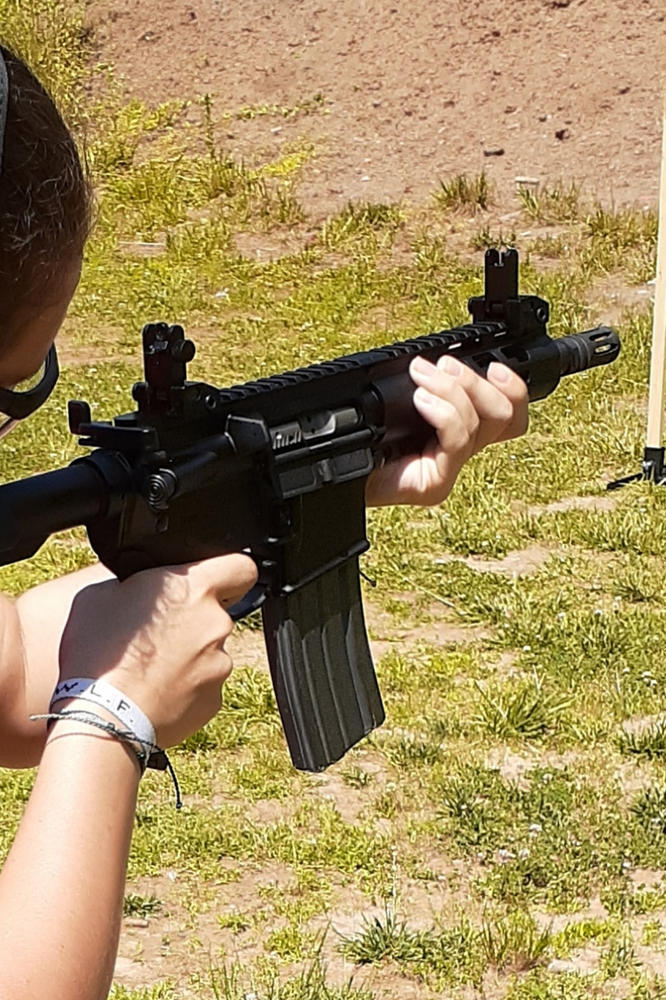
Mastering the AR-15 starts with understanding how to hold it correctly. Our goal here is to get you comfortable and accurate with your rifle. So let's talk stance and grip—two critical elements that'll make a world of difference.
First, we need to get our feet set. Position them shoulder-width apart with the non-dominant foot slightly forward. This isn't about fancy footwork; it's about creating a stable base. A slight forward lean is the next step. Think of it as a way to counter the rifle's recoil. Here's where we get into the literally hands-on part: grip.
Your support hand (that's the nondominant one, folks) has to be firm on the handguard or forward grip. Ozark Armament offers a range of grips that can help with this. A solid grip keeps muzzle movement down, and that means better accuracy. Now, bring in your dominant hand to the pistol grip. Keep it level and steady. Just right.
Now comes the trigger talk. It's crucial not to jerk or yank the trigger. That's a surefire way to send your shots astray. Instead, you want to press it back slowly, letting the gun fire almost by surprise. Keep your finger pad resting gently on the trigger guard until it's go time. This helps prevent any sudden movements.
After the shot, it's all about control. Gently let the trigger return to its forward position. Listen for that click—it means you're set for the next round. It's about pacing and control. And with practice, that trigger squeeze and reset will feel like second nature.
Remember, there's no magic here, just dedication and practice. The more you work on your stance and grip, the more natural it will become. Our beginners' guide to the AR-15 isn't just about putting rounds downrange; it's about doing so effectively and with confidence. Stay persistent, and you'll see your skills sharpen with every session.
Trigger Control: Achieving a Smooth and Accurate Trigger Press
Mastering trigger control is crucial for achieving accuracy with an AR-15. As beginners, we often overlook the subtleties of a smooth trigger pull, but it's the foundation for consistent shooting. Here's how to perfect this fundamental skill.
Understanding the Basics
First, we need to acquaint ourselves with the trigger mechanism. Resting our finger pad on the trigger guard until we're ready to fire helps avoid any accidental discharge and jerking movements. Dry fire practice is a great way to get used to the trigger's feel and response without live ammunition. When we do pull the trigger, we must press it slowly and steadily to prevent disrupting the rifle's aim.
The Art of the Squeeze and Reset
A proper trigger press involves both the squeeze and the careful release to reset. After firing, we shouldn't just let the trigger slam forward. Instead, controlling it both on pull and release ensures our AR-15 is ready for the next shot with minimal time lost. Over time and with practice, we'll find the right rhythm and force needed for rapid yet precise follow-up shots. This controlled method decreases the time between discharges, enabling a sequence of accurate shots.
Ozark Armament recommends investing in a quality trigger to enhance our shooting experience. Upgrades from standard mil-spec options to models with a cleaner pull can make a noticeable difference in performance. Options like drop-in triggers provide Tunable Performance, making them a valuable addition to any beginner's AR-15 setup.
Selecting the Right Trigger
When exploring triggers, consider factors like pull weight and reset style. A quality trigger doesn't have to break the bank, but should offer a smooth pull that feels natural. Upgraded triggers promote quicker, more precise shooting, proving invaluable as we develop our skills. Keep in mind that a beginner's guide to the AR-15 isn't complete without a mention of a solid trigger system – it's an investment in our shooting proficiency.
With these tips in hand, we're on our way to controlling and mastering our AR-15 trigger. Practice is our best ally, and a smooth trigger press is within our grasp, paving the way to becoming proficient marksmen.
The Mag Release: Quickly and Safely Changing Magazines
Managing your AR-15 efficiently means that you need to know how to swiftly change magazines. This skill is crucial for both practical and competitive shooters. Here's our quick guide to using the mag release effectively, ensuring that you're always ready for the next round.
Safety First
Before attempting to change magazines, always make sure your AR-15 is on safe. Keeping the muzzle pointed in a secure direction is paramount. Once those safety practices are in place, you're set to proceed with the magazine change.
Understanding the Mag Release
The mag release is a button found on the right-hand side of the lower receiver. Its job is simple: when pressed, it detaches the magazine from the rifle, allowing for a swift change. First-time AR-15 owners should familiarize themselves with the location and feel of this button without looking at it.
The Process
- With your trigger finger, press the mag release. Your other hand should be ready to catch the magazine to prevent it from hitting the ground—saving time and possibly your magazine from damage.
- Securely grab a fresh magazine.
- Insert the new magazine with the bullets facing forward. You'll hear a click once it's fully seated.
- Quickly resume your shooting position. Practice this to ensure it becomes a second nature.
Practice Makes Perfect
The key to mastering fast magazine changes is repetition. Practice the steps above with inert training tools like snap caps. This will build muscle memory and confidence in handling your AR-15 during high-pressure situations.
Troubleshooting
In case the mag doesn't release, check if there's anything obstructing the mag well or the magazine itself. Regular cleaning and maintenance can prevent such issues, ensuring your AR-15 runs smoothly.
By understanding and practicing how to manipulate the mag release and change magazines quickly, you'll enhance your AR-15 handling skills. It's also wise to invest in reliable equipment that supports your need for speed and precision. With time and practice, changing magazines will become a swift, seamless part of your shooting routine.
Knowing Your Parts: A Guide to the AR-15's Components

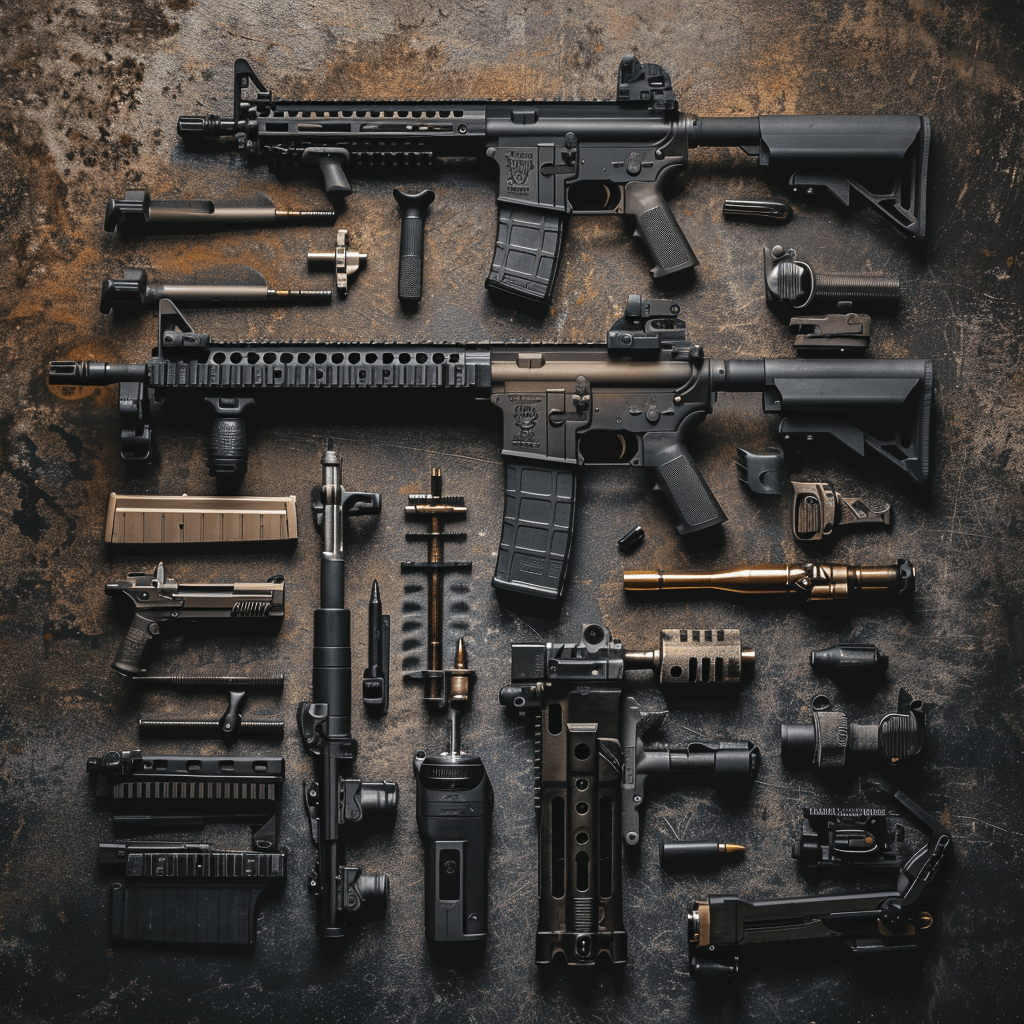
Building an AR-15 can seem overwhelming due to its many parts. Our guide aims to break down the essentials, empowering beginners with clear, knowledgeable direction.
The Lower Receiver - Often considered the foundation of your AR-15, the lower receiver houses several critical components including the trigger assembly, grip, and stock. Familiarize yourself with parts like the hammer, bolt catch, and safety selector. Remember, the lower receiver is the firearm's actual serialized part, making it subject to regulatory control.
The Upper Receiver - This is where your AR-15 becomes capable of firing. The upper receiver includes the barrel, forend, charging handle, and bolt carrier group. Items pivotal to its performance are the gas system that cycles the firearm and the muzzle device that manages recoil and muzzle rise.
Barrel and Caliber Choices - A Beginner’s Guide to the AR-15 isn’t complete without discussing barrels and calibers. The barrel affects the bullet's velocity and accuracy, while the caliber determines the firepower. Popular calibers for AR-15s include 5.56 NATO and .223 Remington, but there are many options for a Guide to AR-15 Calibers, catering to various uses from target shooting to hunting.
Accessories for Enhancement - After you’ve assembled your AR-15, there’s a plethora of accessories to enhance your experience. With products from Ozark Armament, you can easily customize your rifle to fit your needs, whether that's with a new sight for accuracy or a sling for ease of carry. I'm personally nostalgic and have a soft spot for our classic a2 carry handle.
Getting a grip on AR-15 components is just the start. As you become more experienced, you'll get a feel for what upgrades and customizations work best for you. Patience and practice will help you build a rifle that’s not only functional but also a reflection of your personal preferences and shooting style.
Empowering Yourself with AR-15 Mastery
We've walked through the essentials of the AR-15, from safe handling to trigger mastery and understanding the rifle's components. With these fundamentals in hand, we're confident you can embark on your journey to becoming an adept AR-15 owner. Remember, practice makes perfect, and customizing your rifle should reflect your unique style and needs. Embrace the process of learning and enjoy the empowerment that comes with mastering your AR-15. Stay safe, stay informed, and let your skills evolve with experience.
Frequently Asked Questions
What AR-15 do the military use?
The U.S. military primarily uses the M4 Carbine, a modern variant of the AR-15 developed by Colt Defense LLC. The Colt M16 and its variants have been standard issue for decades.
What size AR-15 should I get?
For general use, including personal defense and recreational shooting, a 16-inch barrel AR-15 is the most popular and versatile option.
How much should you spend on a good AR-15?
An initial budget of $800 to $1000 is recommended for a quality AR-15 that balances cost with reliability and performance.
What is the best gun for home defense?
*In our humble opinion:
Best Pistol: Glock 19.
Best Revolver: Smith & Wesson 686.
Best Semi-Auto Shotgun: Benelli M4.
Best Pump-Action: Mossberg 500.
Best Pistol Caliber Carbine: Sig Sauer MPX.
Best Lever Action: Henry Big Boy.
What is the most important component of an AR-15?
The barrel, BCG (Bolt Carrier Group), and gas system components are critical for safe and effective operation of an AR-15. They ensure the rifle fires reliably.
ARTICLE WRITTEN BY MATT RICE, OWNER OPERATOR OF OZARK ARMAMENT

